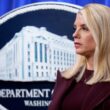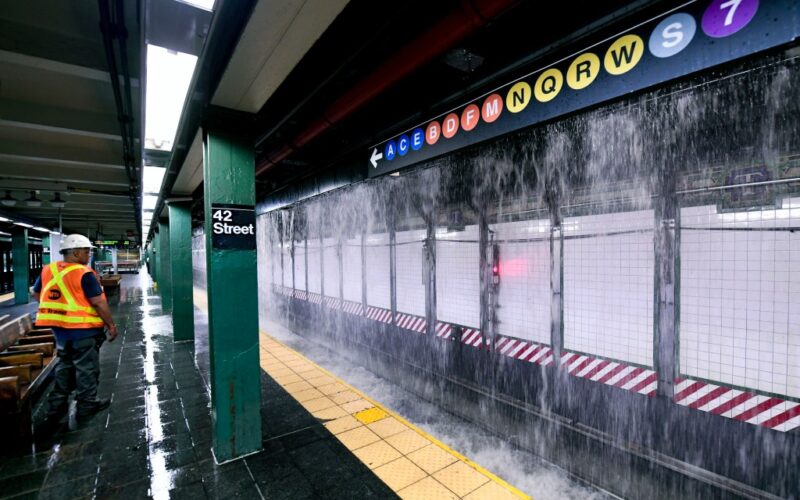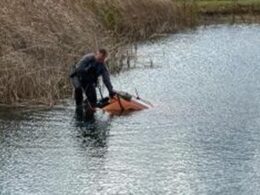Twice in two weeks, record-breaking rain forced parts of our city, and our city’s lifeline, the subway, to a standstill. Subway steps turned into waterfalls and platforms became pools. Water rushing from the ground, the ceiling, and the walls sent straphangers at the Seventh Ave. stop in Brooklyn to help one another sidestep across gates, barely above rushing water, to exit safely.
Events like these are happening with all too much frequency, and time after time we become a little more numb to the outrageousness, and not a bit more prepared for the next time. The next time is coming sooner than we think, as storms become more frequent and intense.
On an average day, the subway system pumps 14 million gallons of water every day. When New York City gets more rain than our outdated sewers can manage, the water starts flowing to points of lowest elevation, often our subway stations, filling them with water contaminated by pollution, sewage, bacteria, and toxins. In a matter of seconds, it can sweep you off your feet or electrocute you. While flooding subsides quickly, it poses an acute risk in the moment.
As a child of New York City in the 1970s and 1980s, I remember the many public service announcements, aimed at people of all ages and backgrounds, to remind us we can problem solve better when we do it together.
Smokey the Bear taught us “Only you can prevent forest fires,” and has been a mainstay in the Macy’s Thanksgiving Parade since 1952. Mayor Ed Koch boldly told us “If it’s yellow let it mellow” and every kid of a certain age knew to “stop, drop, and roll” if their clothes caught on fire.
More recently, in the wake of 9/11, you couldn’t take a subway without the security reminder, “If you see something, say something.” And of course, the beloved, “I 🩷 NY,” which began as a tourism campaign and effectively tapped into the pride of New Yorkers, returning in the wake of 9/11 to be “I 🩷 New York. More than ever.“
Rainproofing New York City to safeguard against future heavy storms will require a multi-pronged approach to upgrading our infrastructure, rethinking our land use, and turning the “Concrete Jungle” into a sponge. In the meantime, we can be better prepared for the next rainstorm through an education and awareness campaign sharing the simple do’s and don’ts of how to be safe during flash floods. For messengers, we could look to local icons:
What if Pizza Rat told New Yorkers to check their subway route for possible closures before or during heavy rains. Mr. Met could impress the importance of signing up for “Notify NYC” — the NYC Office of Emergency Management alert program, for real-time warnings, available in 14 languages. Or the New York Liberty’s Ellie the Elephant could remind us to wash immediately, following contact with flood water.
New York City has already begun working with neighborhood groups and activating organizations who sign up to be notified before a big rain to clean debris like falling leaves and garbage from the sewer drains in their community.
The City of San Francisco goes further. Their “Adopt a Drain” program features a public interactive map of every drain in the city — showing where they flow to, and where there’s greatest need — prompting competitive creativity in the naming of one’s drain with catchy names like “You’re so Drain” and “Here Comes the Drain Again.” to enlist individuals in helping keep an eye on and clear drains.
Across the Atlantic Ocean, Rainproof Amsterdam, has developed pop-up “rain bars” that serve beers brewed with filtered rainwater collected throughout the city. The bars travel around the city to educate residents about what they can do to address heavy rain. Code Yellow, the beer brewed by Amsterdam-based brewery Rainbeer is named for the color coded weather forecast that indicates dangerous weather.
Rainproofing is going to be a long process; with better education we can raise awareness to keep ourselves and our fellow New Yorkers safe. When we do, we can update the slogan to “I 🩷New York, Even When it Rains.”
Chester is the director of Rebuild by Design at New York University, an organization that helps communities adapt to climate change. To learn more about preparing and safeguarding our city for heavy rain check out their program, Rainproof NYC.








